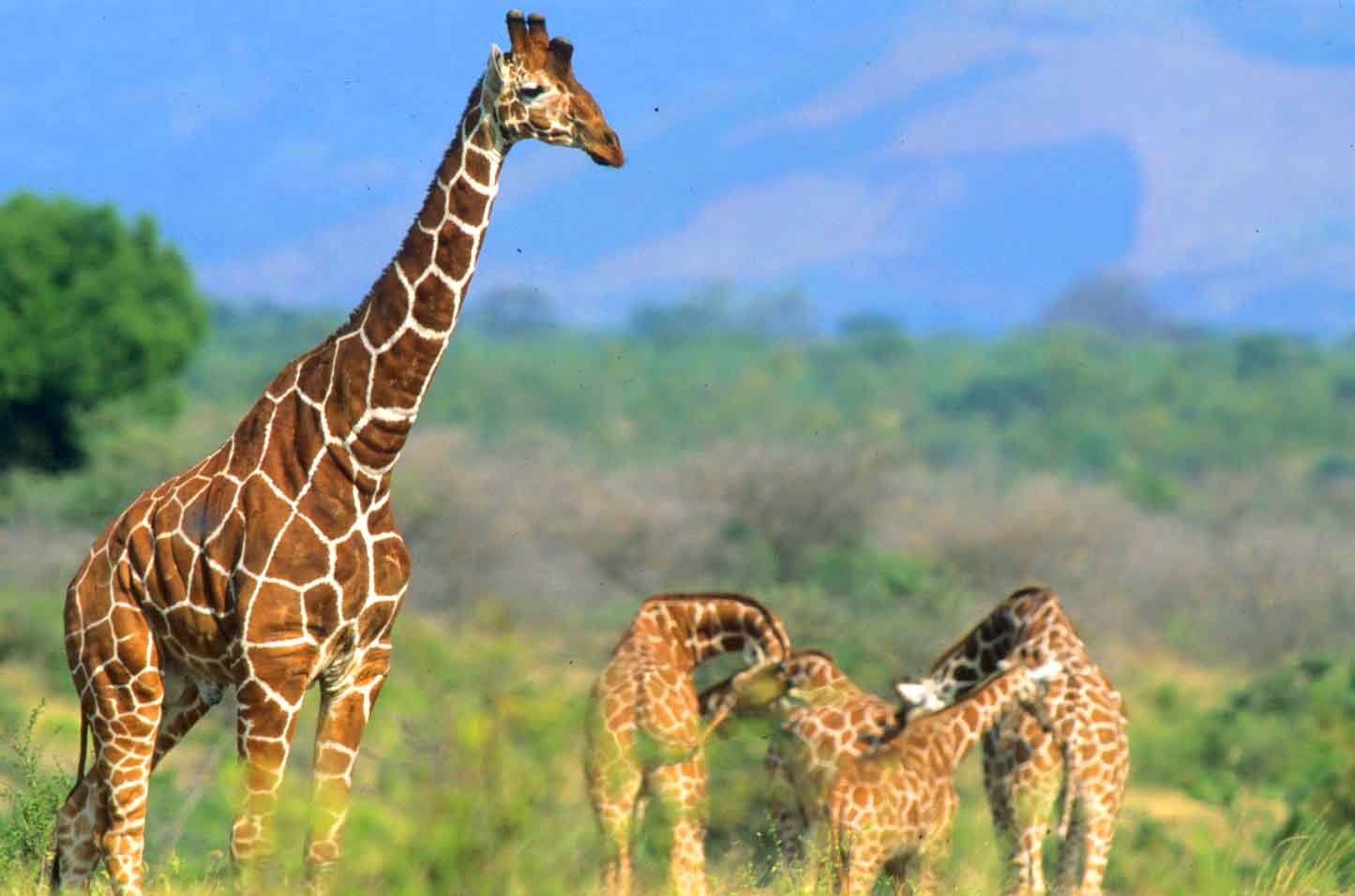
Marvelous, remote, rugged and prominently unspoilt, Meru sits intact in a wilderness less visited, yet surrounded by undiluted natural beauty. It is wild and beautiful, straddling the equator and bisected by 13 rivers and numerous mountain-fed streams. The scenery is diverse from woodlands at 3,000ft on the slopes of Nyambene mountain range, northeast of Mt. Kenya to wide-open plains with meandering riverbanks dotted with doum palms.
The park teems with a variety of wildlife species including elephant, Grevy’s zebra, lion, cheetah, leopard, hartebeest, hippo, buffalo and the reticulated giraffe among others. Meru hosts a rhino sanctuary that is home to the endangered black and white rhino species. Critically endangered, the rhinos are under a twenty-four hour surveillance. The sanctuary offers one of the best rhino viewing experiences in the wild.
Bird life is also exceptionally diverse with over 400 bird species recorded. These include Peter’s Fin foot, inhabiting the Murera and Ura rivers; Pel’s fishing owl, kingfishers, rollers, bee-eaters, starlings and weavers. The rivers abound with hippo populations, crocodiles, and fish.
The park is famous as the setting for Joy Adamson’s book ‘Born Free”, the story of the Adamson’s life and research amongst lions and cheetahs. Elsa the lioness was the most well known and her grave is marked inside the park.
Here are some frequently asked questions (FAQs) about Meru National Park:
Where is Meru National Park located?
What is the main attraction of Meru National Park?
How do I get to Meru National Park?
What activities can I do in Meru National Park?
Is it safe to visit Meru National Park?
When is the best time to visit Meru National Park?
Can I see the Big Five in Meru National Park?
Are there accommodations available in Meru National Park?
What wildlife can I see in Meru National Park?
Are there dining facilities and amenities in Meru National Park?